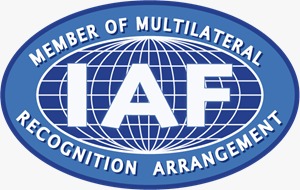Azure SQL Database
Azure SQL Database is a relational database provided as Database-as-a-Service, which is a part of Microsoft’s Cloud Infrastructure Platform, Microsoft Azure. It is also called as SQL Azure. It provides database-backed managed service in the cloud with a petabyte-scale infrastructure. It is based on the latest version of the Microsoft SQL Server database engine and also receives timely and frequent updates. It is a fully managed service by Microsoft, so the user just has to provide the data and can be free of managing the infrastructure, security, servers, maintenance, etc.
The key benefits of Migrating Database to Azure Cloud are :
No physical hardware
As Microsoft hosts the SQL Database, the infrastructure cost and the problems with maintaining server has vanished.
Usability (same as SQL Server Management Studio)
Working on Azure SQL Database is the same as with SQL Server, and is also familiar to any other SQL Developer. It is quite easier to use and administer.
Deployment Models
Azure provides the following deployment options along with two different purchasing models (vCore-based purchasing model and DTU-based purchasing model), for Azure SQL Database, which makes it easier to sort out the needs of the business:
- Single Database
It is an isolated database, that is similar to the contained database in the SQL Server Database Engine.
- Managed Instance
It is a set of databases that can be used together and it also supports easy migrations.
- Elastic Pool
It is databases in a multi-tenant architecture, where the common resources can be shared among users, which also makes it easier to opt-in and out of the system.
Variety in Data
It supports and processes both relational data and non-relational structures, such as graphs, JSON, spatial and XML.
Affordable
It is quite cost-effective as compared to maintenance and cost of infrastructure and servers. Also, it is cheaper than hosting SQL Server on Azure Virtual Machine.
Scalability
It offers a flexible option to upgrade the plans as the business needs grow without any hassle and more applications can also be added easily.
Reliable and Highly Available
It is managed by Microsoft and data is spread across data centers, and with 24*7 support teams. It also creates a high-performance data storage layer for applications and solutions, with high-speed connectivity.
Connectivity
It supports even the non-Microsoft technologies and languages, making it comfortable to be used at a larger scale and for a variety of modern cloud applications.
Sync & Migration
The sync and migration from existing SQL Server data (locally) are also supported using the service named, SQL Data Sync and is already included in the Azure SQL packages and is not needed to be bought separately.
Frequent Updates
It is based on the latest version of the Microsoft SQL Server database engine and receives frequent and newest capabilities of SQL Server. Microsoft also releases updates and patches exclusive only to Azure SQL which are thoroughly tested.
Advanced Features
We can use advanced query processing features, such as high-performance in-memory technologies and intelligent query processing, along with three preview offerings:-
row mode memory grant feedback
approximate query processing
table variable deferred compilation
Accessibility
The Azure SQL Database can be accessed from a variety of devices including iPhone, Android or any other similar device. You can log in from a browser and can create, delete and administer your database with a straightforward connection process.
Data-Loss Prevention
With data being stored across different data centers managed by Microsoft, there is no loss of data even in the case of outages or disasters.
Intelligent Protection
Azure SQL Database is quite secure as it has different layers of Security
- Network Security
- Access Management
- Threat Protection
- Information Protection
Azure SQL Database gives a variety of built-in security and compliance features :
- Threat Protection: Azure SQL takes care of sensitive data, by managing database vulnerabilities and detecting anomalous activities that might indicate a threat to the database.
- Data discovery and classification:
Azure SQL Database uses its built-in capabilities for discovering, classifying, labeling, and protecting sensitive data. It also tracks access to this data within the data and beyond it.
- Vulnerability assessment
It helps to discover, track, and remove potential database vulnerabilities, security issues and thus, enhancing database protection.
- Threat detection:
This feature helps to detect any unusual or harmful attempts to access or exploit the database, by continuously monitoring the database for suspicious activities. It also provides immediate security alerts on potential vulnerabilities, SQL injection attacks, and anomalous database access patterns.
- Data discovery and classification:
- Security Auditing
It audits and tracks all database events and logs them to the Azure Storage Account, which helps in understanding activities, discrepancies anomalies that might result in suspected security violations.
- Data Encryption
It helps secure data by providing encryption. It uses transport layer security for in-transit data and transparent data encryption for data at rest, i.e. the data is always encrypted.
- Azure Active Directory integration
It enables us to centrally manage identities of database users and other Microsoft services with Azure Active Directory integration using multi-factor authentication and simplifies permission management.







Leave A Comment